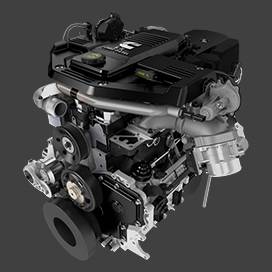Dec . 25, 2024 07:42 Back to list
Durable Cast Iron Brake Drum for Enhanced Vehicle Performance and Safety
The Significance of Cast Iron Brake Drums in Automotive Engineering
Brake systems are a crucial component of any vehicle, ensuring safety and control during operation. Among the various materials used in manufacturing brake components, cast iron has long been favored for its unique properties, particularly in the production of brake drums. This article explores the essential role of cast iron brake drums in automotive engineering, highlighting their advantages, manufacturing processes, and challenges.
Advantages of Cast Iron Brake Drums
Cast iron brake drums are widely recognized for their durability and performance. One of their key benefits is their ability to withstand high temperatures. During braking, friction generates heat, and cast iron can dissipate this heat effectively, reducing the risk of brake fade—where the braking power diminishes with prolonged use. This heat resistance makes cast iron an ideal choice for vehicles that endure heavy loads or frequent stops, such as trucks and buses.
In addition to thermal stability, cast iron offerings excellent wear resistance. The material can withstand the friction encountered during braking, which extends the lifespan of the brake drum and the overall braking system. Cast iron's toughness also contributes to its resistance to cracking and warping, which are common failures in brake drums that can compromise vehicle safety.
Another significant advantage of cast iron brake drums is their capability for sound dampening. Vehicles often produce noise during braking, and cast iron’s dense structure can effectively absorb these vibrations, leading to a quieter driving experience. This feature is particularly important in passenger vehicles where comfort and tranquility are paramount.
The Manufacturing Process
The manufacturing of cast iron brake drums involves several detailed steps. Initially, raw materials, primarily iron, carbon, and various alloying elements, are melted in a furnace. The molten iron is then poured into molds shaped like the desired brake drum. This casting process allows for precise dimensions and intricate designs, ensuring a proper fit within the brake system.
cast iron brake drum

Once the casting process is complete, the brake drums undergo cooling and solidification. Afterward, they are subjected to several finishing processes, including machining. Machining involves the removal of excess material to achieve the final dimensions and a smooth surface finish, which is crucial for optimal contact with the brake shoes.
Quality control is integral to the manufacturing of brake drums. Each batch is tested for mechanical properties such as hardness, tensile strength, and fatigue resistance. This testing ensures that the finished products meet stringent safety standards before they are sent off for installation in vehicles.
Challenges and Future Directions
Despite their advantages, cast iron brake drums face challenges in modern automotive engineering. One significant issue is weight—cast iron is heavier than some newer materials like aluminum and composites. As the automotive industry moves towards lighter components to improve fuel efficiency and performance, manufacturers are exploring alternative materials for brake systems.
Furthermore, environmental regulations are influencing the production methods and materials used in manufacturing. Companies are increasingly required to adopt greener practices, prompting innovation in creating eco-friendly alternatives while ensuring safety and performance.
Conclusion
Cast iron brake drums have played a vital role in automotive engineering, providing durability, thermal stability, and sound dampening. The manufacturing process involves a combination of traditional casting and modern quality control practices to ensure their reliability. While the future may present challenges with the rise of lightweight materials and environmental considerations, the legacy of cast iron brake drums in enhancing vehicle safety remains undisputed. As the automotive industry continues to evolve, the balance between tradition and innovation will shape the next generation of braking technologies.
-
Scania Brake Drums: OEM Quality for Optimal Safety & Durability
NewsAug.16,2025
-
R.V.I: Advanced Remote Visual Inspection for Precision
NewsAug.15,2025
-
Discover HYUNDA: Innovative Vehicles, Equipment & Solutions
NewsAug.14,2025
-
R.V.I: Unlock Advanced Insights & Real-time Performance
NewsAug.13,2025
-
Kamaz Brake Drum: Durable & Reliable for Heavy Duty Trucks
NewsAug.12,2025
-
Heavy Duty Iveco Brake Drum - Premium Quality & Safety
NewsAug.11,2025
